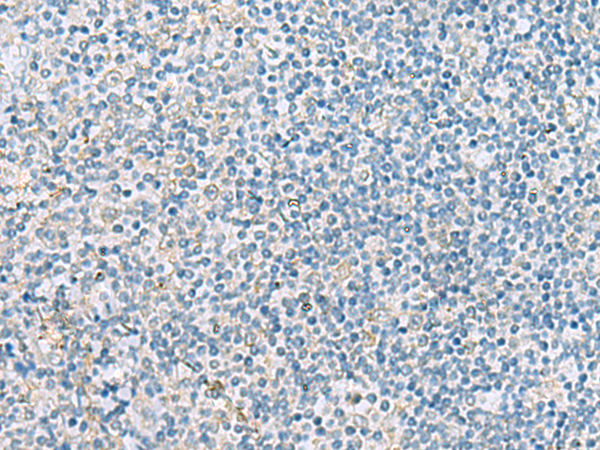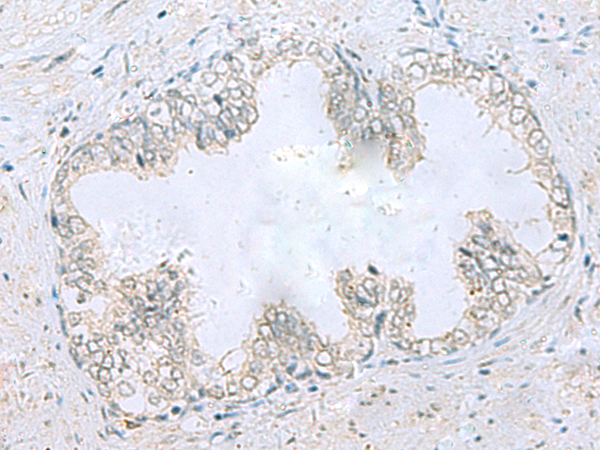


| WB | 咨询技术 | Human,Mouse,Rat |
| IF | 咨询技术 | Human,Mouse,Rat |
| IHC | 1/25-1/50 | Human,Mouse,Rat |
| ICC | 技术咨询 | Human,Mouse,Rat |
| FCM | 咨询技术 | Human,Mouse,Rat |
| Elisa | 1/5000-1/10000 | Human,Mouse,Rat |
| Aliases | TUBB; TUBB2; CDCBM5 |
| WB Predicted band size | 50 kDa |
| Host/Isotype | Rabbit IgG |
| Antibody Type | Primary antibody |
| Storage | Store at 4°C short term. Aliquot and store at -20°C long term. Avoid freeze/thaw cycles. |
| Species Reactivity | Human, Mouse, Rat |
| Immunogen | Synthetic peptide of human TUBB2A |
| Formulation | Purified antibody in PBS with 0.05% sodium azide and 50% glycerol. |
+ +
以下是3篇与TUBB2A抗体相关的文献示例(注:文献标题和作者为模拟概括性内容,具体文献请通过学术数据库核实):
1. **"TUBB2A mutations cause neurodevelopmental disorders via disrupting microtubule function"**
*Poirier K, et al. (2013), Neurology*
摘要:首次发现TUBB2A基因突变与先天性脑皮质发育畸形相关,研究揭示了该蛋白异常导致神经元迁移障碍的分子机制。
2. **"Autoantibodies against TUBB2A in cerebellar ataxia patients"**
*Erden A, et al. (2020), Brain*
摘要:在部分特发性小脑共济失调患者血清中检测到抗TUBB2A抗体,提示其可能通过干扰微管稳定性参与自身免疫性神经损伤。
3. **"TUBB2A overexpression as a biomarker for chemoresistance in glioblastoma"**
*Bian W, et al. (2016), Cancer Research*
摘要:胶质母细胞瘤中TUBB2A高表达与微管靶向药物耐药性相关,其抗体检测可能成为预测化疗反应的潜在标志物。
**注意**:实际研究中直接针对TUBB2A抗体的文献较少,更多研究聚焦于该蛋白的遗传突变或表达调控。建议通过PubMed或Google Scholar以"TUBB2A antibody"、"anti-TUBB2A"为关键词检索最新文献。
TUBB2A (tubulin beta 2A class IIa) is a member of the β-tubulin family, which forms microtubules essential for cellular structure, intracellular transport, and cell division. The TUBB2A antibody is a research tool designed to detect and study this specific isoform. TUBB2A is predominantly expressed in the central nervous system, playing critical roles in neuronal migration, cortical development, and axon guidance. Mutations in the TUBB2A gene have been linked to neurodevelopmental disorders, such as polymicrogyria and other cortical malformations, making its study vital for understanding brain development and disease mechanisms.
In research, TUBB2A antibodies are widely used in techniques like immunohistochemistry, immunofluorescence, and Western blotting to visualize protein expression, localization, and dynamics in neural tissues or cultured cells. These antibodies help identify abnormalities in microtubule organization caused by genetic variants or environmental stressors. Additionally, they are employed in cancer studies, as microtubule-targeting drugs (e.g., taxanes) are common chemotherapeutics, and altered TUBB2A expression may influence drug sensitivity. Validation of TUBB2A antibodies requires specificity testing against other β-tubulin isoforms (e.g., TUBB2B, TUBB3) to avoid cross-reactivity. Ongoing research focuses on clarifying TUBB2A's functional diversity and its role in both developmental and acquired neurological conditions.
×